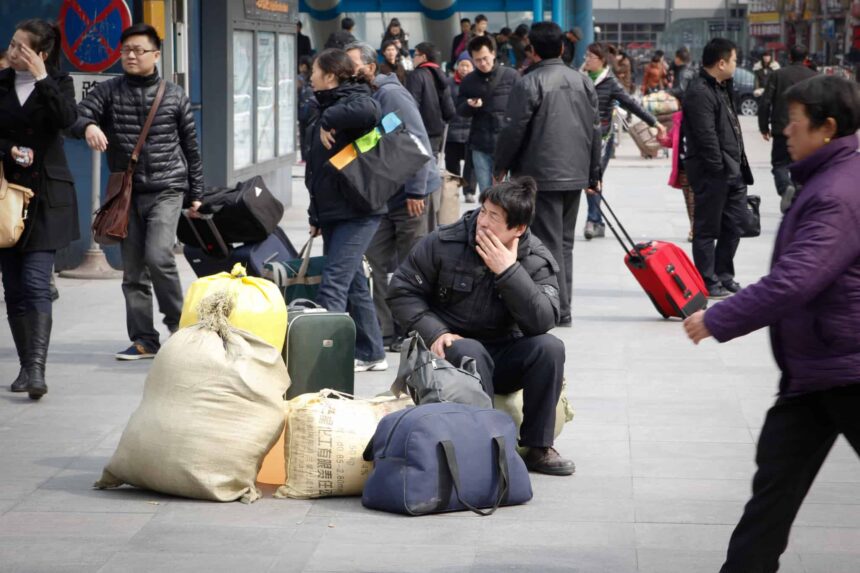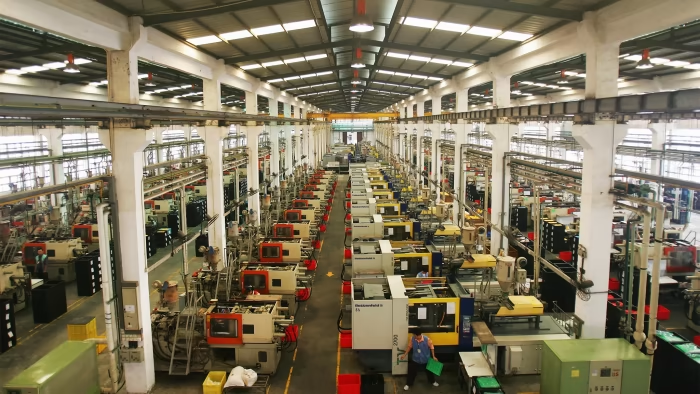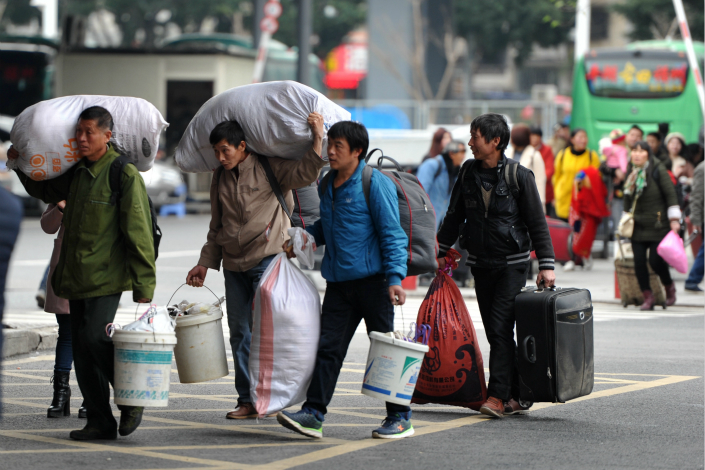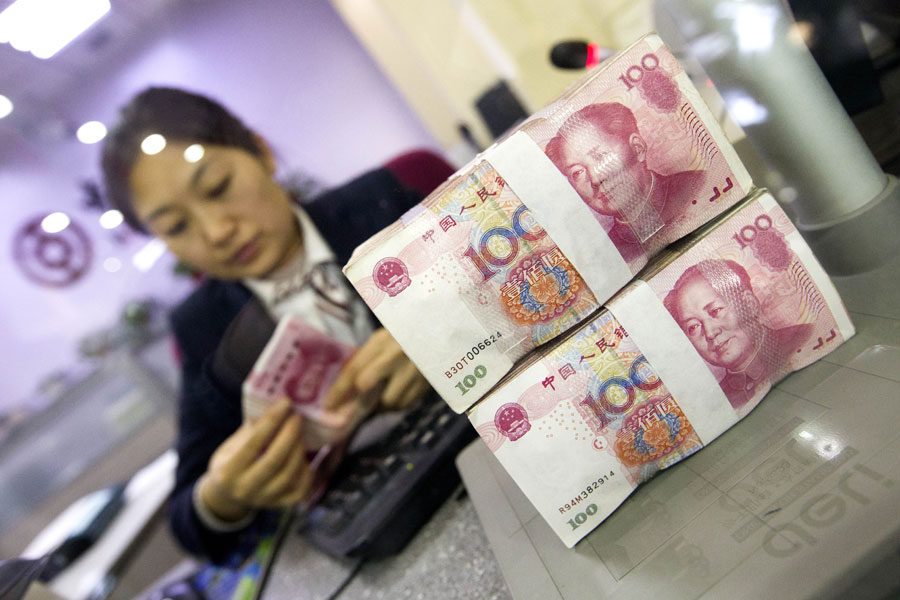BEIJING – China’s main manufacturing regions are under stress as factories are closing, people are losing jobs, and economic problems are getting worse. U.S. tariffs, high youth unemployment, and falling prices are driving this slump.
The government has started stimulus programs, but it’s unclear if they’ll work. This piece explains what’s causing China’s manufacturing troubles and what it means for workers and the economy.
U.S. tariffs have hit China’s industrial sector. Since President Trump’s “Liberation Day” tariffs, which reached 145% on Chinese products, demand from overseas has dropped sharply. Factories in places like Guangdong and Zhejiang are struggling to keep going. Many depend on U.S. customers. As orders dry up, production slows or stops.
In April 2025, factory activity in China dropped quickly. The official PMI fell to 49.0, the lowest since December 2023. This was the fastest drop in over a year. Many manufacturers tried to ship goods early to beat tariffs, but that strategy failed. Small businesses with tight budgets are at the greatest risk. Most can’t handle the extra costs from tariffs.
Exporters are desperate to keep afloat. Some lower prices or accept smaller profits to keep customers. Others stop production. A toy factory in Guangdong lost business from Baltimore after orders were dropped. Many are searching for new buyers, but overseas demand is weak. These tariffs are more than a trade dispute—they threaten China’s economic health.
Factory Closures: The Problem Spreads
Factory shutdowns are happening in more regions. Export centres like Yiwu and Dongguan are feeling it most. Some plants have cut shifts or closed for weeks. Others are shutting down for good. This wave of closures is linked to the shock from tariffs.
One furniture maker in Zhejiang closed his Vietnam plant after U.S. tariffs were raised there, too. For some, moving production abroad is no longer an answer. Back in China, a bathtub maker has let workers go.
In Guangzhou, a clothing factory manager is worried about weak local demand. Altogether, these closures show the bigger problem: China’s manufacturing is shrinking under trade pressure.
The human cost is heavy. Estimates suggest between 10 and 20 million workers could lose jobs over tariffs. Factories are cutting overtime, freezing hiring, or sending people home. Sectors like plastics and appliances are laying off the most staff. These lost jobs ripple through local economies, hurting shops and services that rely on factory workers.
Young people in China are feeling the pain the most. Official numbers from August 2024 showed youth unemployment at 18.8% for those aged 16-24, not counting students. Some outside reports put the real rate as high as 46.5%. Just 15-20% of new graduates are finding jobs now, down from 30% ten years ago. Factory closures are making this worse.
Young workers often take lower-skilled jobs in factories. As plants shut down, these roles vanish. Many graduates move back in with their families. They’ve been called “professional children,” relying on parents for support. Social media is full of their stories and frustrations. Worries about rising youth joblessness are growing among the country’s leaders.
The government has taken steps like childcare help, higher pensions, and trade-in deals to get people spending. But these haven’t fixed the job shortage. Some plans for job training and new businesses are in the works, but results are slow. The focus on tight state control limits bigger changes. For now, young people in China face a tough job market.
Job Losses in Manufacturing: The Wound Gets Worse
Job cuts in manufacturing are happening faster. To save money, many factories are automating more, which means fewer jobs. Others are downsizing as orders fall. A clothing plant in Guangzhou let go of workers to stay open. An automation firm cut jobs after its revenue dropped 16%. This pattern is spreading.
The slump in exports is driving layoffs. Last year, exports made up about a third of China’s growth. With fewer orders from the U.S., factories struggle to keep staff. Many workers face shorter hours or are let go. Some factories offer unpaid leave instead of firing people, but that doesn’t help much.
Automation adds more pressure. While high-tech industries like AI and electric cars are growing, they don’t hire as many workers as traditional factories. Classic manufacturing, which employs millions, is shrinking. This mismatch leaves many out of work. In February 2025, urban unemployment hit 5.4%, the highest in two years. Weak job growth is holding back recovery.
Falling prices are hitting China’s economy hard. In March 2025, consumer prices dropped by 0.1% for the second month in a row. Producer prices fell by 2.5%, the biggest drop in four months. These numbers show that demand is weak. People are saving money, worried about their jobs. Businesses cut prices to compete, putting more strain on profits.
Factory closures make this worse. When plants sit idle, extra goods flood the market, driving prices even lower. Cheaper energy and less demand add to the problem. Analysts say deflation will get worse if exports keep slipping. Chinese firms struggle to sell extra products overseas, which puts even more pressure on prices at home.
This cycle of falling prices hurts the whole economy. Companies earn less, so they invest less. Workers’ wages stall, so people spend less. Local governments, already deep in debt, struggle to support communities. The property crisis, with companies like Evergrande defaulting, makes things even tougher. Deflation could lock the economy into a slow-growth trap.
Stimulus Programs: Racing Against the Downturn
China is increasing stimulus efforts to fight the downturn. In March 2025, leaders said they’d boost spending and help offset the tariffs. The government rolled out childcare subsidies, higher pensions, and trade-in deals for electronics. A 300 billion yuan program supports electric cars and appliances. Plans also call for lower interest rates and smaller bank reserve requirements.
Stimulus plans have moved ahead faster this year. The Politburo promised to help stressed companies and workers. But further measures are on hold for now. Experts think there may be another 1-1.5 trillion yuan in stimulus later in 2025. The target is to keep growth at 5%, but tariffs make that tough.
Several challenges stand in the way. Rising debt limits how much the government can spend. Local leaders don’t have the money for big projects. While new measures focus on boosting shopping, what’s needed are bigger changes. Unless people start spending more, the stimulus may not stop deflation. Some think small steps might only delay a deeper slump.
China’s factory closures are affecting the global economy. As production slows, supply chains face disruptions. Countries that depend on Chinese goods could see shortages or higher prices. The trade war is straining relations, with Beijing rejecting U.S. claims about talks. Other countries, like Vietnam, are now facing new tariff pressure, which complicates trade worldwide.
The youth unemployment crisis in China could cause unrest. Frustration is building, and some may push back against the government. Deflation could spread to other countries, weakening demand worldwide. China’s stimulus might steady markets for a while, but real fixes need to address weak spending and too much capacity. The world is watching as China tries to manage these challenges.
China’s manufacturing sector stands at a turning point. U.S. tariffs have exposed its weaknesses. Factory closures are leaving millions jobless. High youth unemployment threatens stability. Falling prices are stalling growth. While stimulus programs are in place, it’s unclear if they’ll be enough.
Leaders in Beijing must balance short-term fixes with long-term changes. Boosting spending, fixing the property mess, and creating jobs are all urgent. The tariff standoff shows no sign of ending soon. How China responds will shape its future and influence the global economy. For now, the burden falls on the country’s workers and factories as the trade fight continues.

















